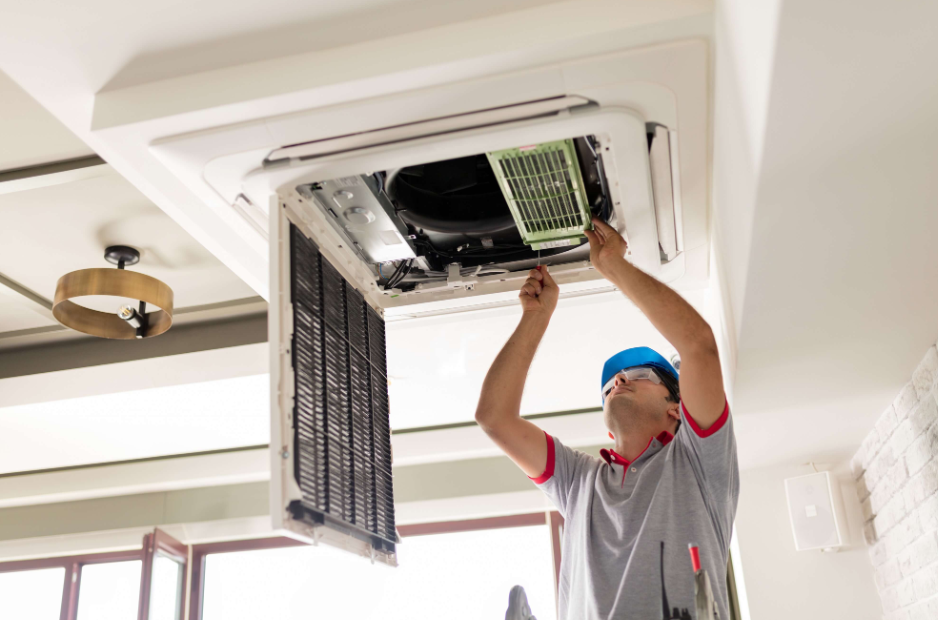Keeping Your Cool: A Comprehensive Guide to Air Conditioning Repair and Maintenance

As temperatures soar during the summer months, having a functional and efficient air conditioning system becomes essential for maintaining comfort and indoor air quality. However, air conditioners are complex systems that can experience various issues over time, ranging from minor inefficiencies to major malfunctions. In this comprehensive guide, we will delve into the world of air conditioning repair and maintenance, covering common problems, DIY troubleshooting tips, the importance of professional services, proactive maintenance practices, and more to ensure your AC system keeps you cool and comfortable year-round.
Understanding Common AC Problems:
Air conditioning systems can encounter a range of issues that impact their performance and efficiency. Some of the most common problems include:
- Insufficient Cooling: If your AC unit is blowing warm air or struggling to reach the desired temperature, it could indicate issues with refrigerant levels, airflow obstructions, or a malfunctioning compressor.
- Strange Noises: Unusual sounds such as banging, rattling, or squealing coming from your AC unit may be caused by loose components, worn-out belts, or motor problems.
- Leaking or Moisture: Water leaks or excess moisture around the AC unit can be a sign of clogged condensate drains, refrigerant leaks, or other drainage issues.
- Electrical Problems: Frequent tripping of circuit breakers, faulty wiring, or malfunctioning sensors can disrupt the electrical components of your AC system, leading to performance issues.
DIY Troubleshooting Tips:
While some AC problems require professional intervention, there are several troubleshooting steps you can take on your own to address minor issues and improve the performance of your air conditioning system:
- Clean or Replace Air Filters: Dirty or clogged air filters can restrict airflow and reduce the efficiency of your AC unit. Regularly cleaning or replacing filters can improve airflow and indoor air quality.
- Check Thermostat Settings: Ensure that your thermostat is set to the correct temperature and mode (cooling or heating) to avoid unnecessary energy consumption and maintain comfort.
- Inspect Outdoor Unit: Clear any debris, leaves, or vegetation around the outdoor condenser unit to ensure proper airflow and heat exchange.
- Clean Condenser Coils: Over time, dust and debris can accumulate on the condenser coils, hindering heat transfer. Use a soft brush or vacuum to clean the coils and improve efficiency.
Importance of Professional AC Repair:
While DIY efforts can address minor issues, there are instances where professional AC repair services are necessary:
- Refrigerant Handling: Handling refrigerant requires specialized equipment and knowledge to prevent leaks and ensure proper levels for optimal cooling.
- Electrical Repairs: Repairing faulty wiring, capacitors, or relays should be left to experienced technicians to avoid electrical hazards and ensure safety.
- Compressor or Motor Issues: The compressor and motor are critical components of your AC system. Repairing or replacing them requires specialized skills and equipment.
- Complex System Diagnostics: Troubleshooting advanced issues such as ductwork leaks, airflow restrictions, or system malfunctions often requires diagnostic tools and expertise that professionals possess.
Proactive Maintenance Practices:
Regular maintenance is key to extending the lifespan of your air conditioning system and preventing major breakdowns. Consider the following maintenance practices to keep your AC system running smoothly:
- Schedule Annual Maintenance: Schedule professional AC maintenance at least once a year to clean coils, check refrigerant levels, lubricate moving parts, and ensure overall system performance.
- Replace Air Filters: Regularly replace air filters every 1-3 months, or as recommended by the manufacturer, to maintain proper airflow and indoor air quality.
- Inspect Ductwork: Periodically inspect ductwork for leaks, gaps, or blockages that can hinder airflow and reduce efficiency. Seal any leaks or gaps as needed.
- Clear Air Vents and Registers: Ensure that air vents and registers are not blocked by furniture, curtains, or other obstacles that can obstruct airflow.
Choosing a Reliable AC Repair Service:
When it comes to choosing an AC repair service, consider the following factors to ensure you’re working with a reliable and experienced provider:
- Experience and Expertise: Look for a company with years of experience in AC repair and a team of skilled technicians who can handle various types of AC systems.
- Licensing and Certifications: Verify that the AC repair service provider is licensed, insured, and certified to perform HVAC repairs in your area.
- Customer Reviews and References: Check online reviews, testimonials, and ask for references to gauge the reputation and reliability of the AC repair company.
- Service Guarantees and Warranties: Inquire about service guarantees, warranties on repairs, and follow-up support to ensure peace of mind and satisfaction with the services provided.
Conclusion:
Maintaining a cool and comfortable indoor environment relies heavily on the proper functioning of your air conditioning system. By understanding common AC problems, implementing DIY troubleshooting where appropriate, scheduling regular maintenance, and seeking professional AC repair services when needed, you can ensure optimal performance and longevity of your AC unit. Don’t let AC issues disrupt your comfort—take proactive steps to keep your cool and beat the heat effectively.






